Introduction
The aviation industry is evolving rapidly, with airlines constantly seeking new ways to stay competitive, improve passenger experiences, and unlock untapped revenue streams. Virtual Interlining, powered by advanced technology and sophisticated algorithms, provides an innovative path to greater connectivity, better load factors, and operational efficiency.
With innovative services like Airsiders’ Check-Thru solution, which automates baggage transfers even for virtual interlining – airlines can transform the industry and how passengers travel.
Problem
Connectivity remains a key challenge in the aviation industry. Many smaller or regional airlines struggle to expand their reach without formal codeshare or interline agreements, while major carriers are often limited by complex and costly legacy systems. Passengers seeking self-connecting flights face the inconvenience of reclaiming and rechecking baggage during layovers, leading to a less-than-ideal travel experience and missed opportunities for airlines to win loyalty.
Airline managers in operational, network, alliance, or distribution teams grapple with the logistical and financial challenges of enabling seamless connections across carriers. How can they increase connectivity, enhance passenger satisfaction, and streamline operations without massive investments or overhauls?
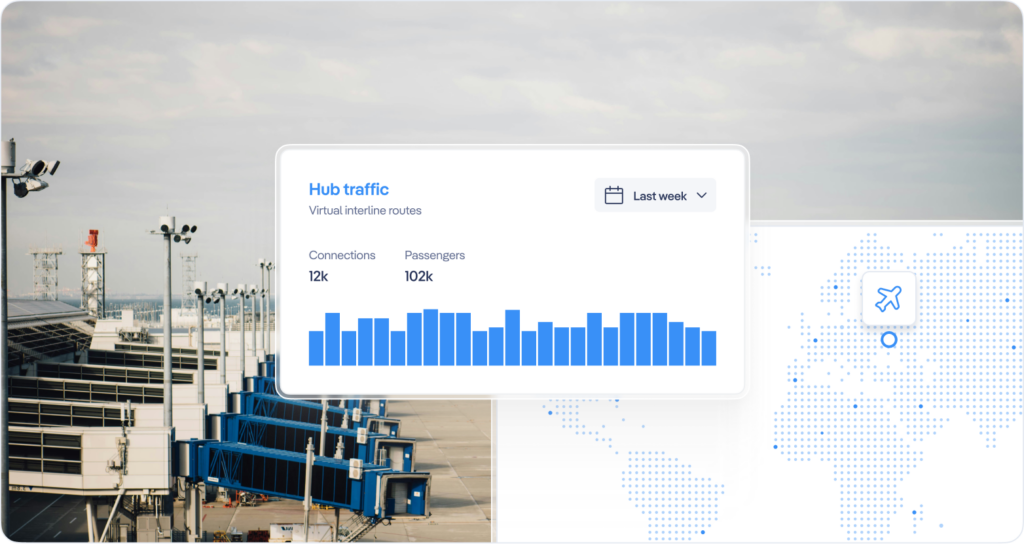
Solution
Virtual Interlining unlocks new opportunities for airlines, enabling seamless connections between carriers without the need for traditional interline or codeshare agreements. Airsiders’ advanced technology takes this a step further with its innovative Check-Thru service, which ensures automatic baggage transfers between flights. This eliminates the hassle of passengers rechecking their bags and creates a smoother and more efficient travel experience.
For airlines, these solutions mean the ability to offer expanded itinerary options, tap into new markets, and increase revenue without the complexities of formal partnerships. By enhancing connectivity and reducing friction in self-connecting journeys, airlines can attract more passengers and improve load factors, strengthening their competitive positioning.
The result? A win-win for airlines and their customers. Travelers benefit from stress-free baggage transfers and more convenient routing options, while airlines unlock new revenue streams, optimize capacity, and enhance customer satisfaction.
Get in Touch
Ready to unlock new market potential for your airline? Discover how Airsiders’ Virtual Interlining and Check-Thru solutions can transform your operations and passenger experience. Get in touch with us today to learn more or schedule a demo.
Introduction
Empty seats on flights represent not only lost revenue for airlines but also missed opportunities to optimize demand. Leveraging innovative solutions like Virtual Interlining (VI) can help airlines create new connections, attract more passengers, and fill seats that might otherwise remain unoccupied.
Problem
Airlines often struggle to fill seats on underutilized routes or during off-peak periods. Traditional partnerships such as interlining and codeshare agreements tend to be inflexible and involve complex negotiations. This constrains the ability of airlines to broaden their networks or adapt quickly to shifting market conditions.
Meanwhile, many passengers piece together self-connecting itineraries involving multiple carriers to find cheaper or more convenient travel options. While this can benefit travelers, it bypasses airline-controlled booking channels and leads to operational difficulties, such as passengers having to re-check their luggage or being unable to transfer due to missing visas. These factors collectively result in lower load factors and unrealized revenue potential.
Solution
Virtual Interlining connects flights from different carriers, enabling seamless itineraries without the need for formal agreements. This creates expanded route options and enhances competitiveness, which can attract more passengers and boost seat occupancy.
Additionally, solutions like Airsiders’ unique Check-thru service address critical pain points for passengers. This service streamlines baggage transfer between connecting flights, eliminating the need for passengers to retrieve and re-check bags during layovers. By making these itineraries more seamless and convenient, Check-thru significantly improves the traveler experience and increases the appeal of VI itineraries.
For airlines, the benefits go beyond passenger satisfaction. By embracing VI and leveraging innovative tools like Check-thru, they can unlock revenue from unused capacity, cater to passengers seeking flexibility and cost-effective travel, and achieve higher load factors.
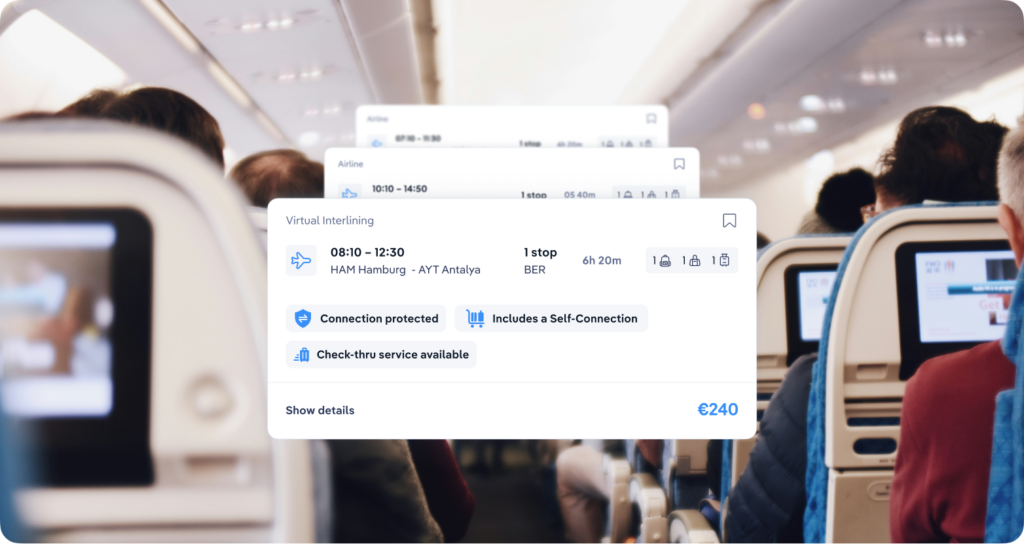
Looking Ahead
Airlines that adapt to Virtual Interlining can maximize its benefits by integrating Airsiders’ Check-thru service. This combination helps address unused seat capacity, enhances passenger satisfaction, and streamlines operations. By leveraging these solutions, airlines can better steer demand toward available capacity, improve efficiency, and elevate the overall travel experience. Contact us today to learn more.
Introduction
Regional carriers face a unique challenge: expanding their networks while operating within tight resource constraints. Virtual interlining provides an innovative way for these airlines to extend their reach, offering passengers more destinations and seamless travel experiences. How can this approach help regional carriers thrive in an increasingly competitive market?
Problem
Regional airlines often operate limited fleets and serve specific geographic areas, making it difficult to compete with larger carriers and alliances. Traditional codeshare agreements and interline partnerships are resource-intensive, leaving regional airlines with fewer options to grow their connectivity. Passengers, meanwhile, frequently deal with the inconvenience of booking separate tickets and managing their baggage during self-connecting journeys, impacting their overall experience.
Solution
Airsiders offers a 360° solution, which includes a White-Label or API technology to empower regional carriers and extend their networks with ease. By integrating Airsiders’ comprehensive content, carriers can connect their flights with those of other airlines, creating unique, cost-effective itineraries.
This approach is further enhanced by our Check-Thru service, which automates baggage transfers for self-connecting passengers, ensuring a seamless experience from start to finish.
With Airsiders’ virtual interlining technology, regional airlines can:
- Boost additional traffic by attracting passengers seeking broader travel options.
- Extend their network beyond their own routes without the complexities of alliances.
- Increase connectivity with access to Airsiders’ expansive virtual interline content.
- Improve the passenger experience through effortless booking and automated baggage handling.
Our solution not only drives revenue growth but also positions regional carriers as competitive players in today’s dynamic aviation landscape.
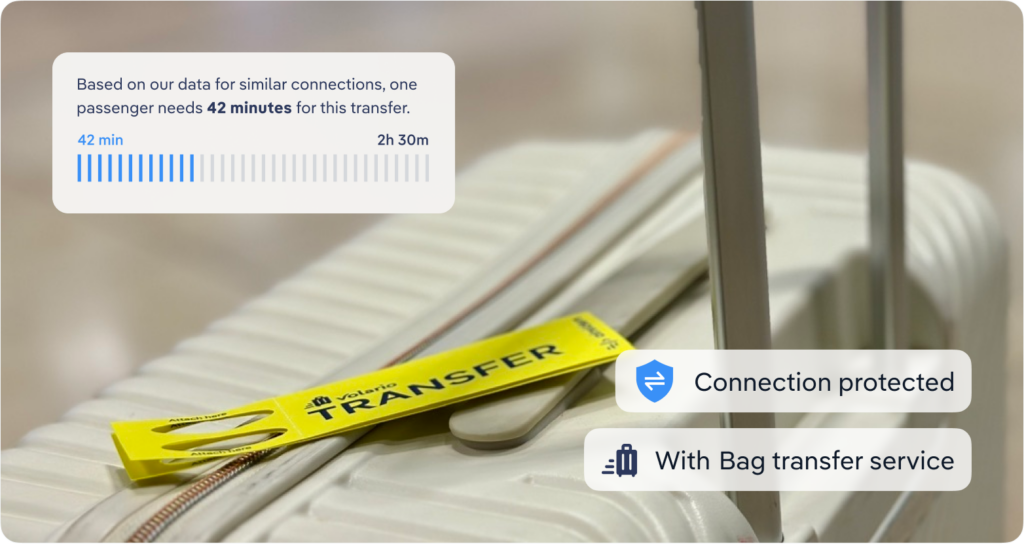
Get in Touch
Ready to expand your regional airline’s network and drive growth? Contact Airsiders today to discover how our virtual interlining solutions and Check-Thru service can transform your business.
Introduction
In an evolving travel landscape, the airline and airport industries are seeking efficient and cost-effective solutions to address connectivity gaps. Virtual interlining offers the future of collaboration, emerging as a competitor to traditional interlining agreements. Here’s why virtual interlining is poised to redefine the industry.
Problem
Traditional interlining agreements are essential for passenger connections, but they come with significant challenges that hinder efficiency and limit growth opportunities:
- Lack of Flexibility: Airlines are constrained by existing partnerships and rigid routes, reducing their ability to offer adaptable, real-time connections.
- Operational Inefficiencies: Legacy interlining arrangements require manual processing and coordination between multiple carriers and airports, which increases delays and the likelihood of operational errors.
- Limited Network Expansion: Airlines and airports can only offer a finite range of connections, missing out on lucrative opportunities to partner with additional carriers without costly agreements.
- Baggage Transfer Bottlenecks: Without automation, handling baggage for multi-carrier journeys often results in lost luggage or long transfer times, leading to a poor passenger experience.
- High Costs for Prorating: Traditional interlining agreements often involve complex prorating systems, which incur additional administrative costs for airlines, adding complexity and financial strain to the process.
Solution
Virtual interlining provides an innovative solution by offering greater flexibility, connectivity, and automation. Airlines and airports can collaborate without being tied to traditional interlining agreements, unlocking more diverse, on-demand connections that can address passenger needs in real-time.
Virtual interlining mitigates all of the above challenges, enabling smoother connections, lower operational costs, and increased route flexibility. Furthermore, the development of Check-thru, a service developed by Airsiders, has addressed the last missing piece of the virtual interlining puzzle. This solution ensures that baggage is seamlessly transferred to the final destination, helping reduce minimum connecting times, lower administrative costs, and enhance customer satisfaction, without requiring costly interline agreements.

Get in Touch
Want to learn how virtual interlining can revolutionize your operations? Get in touch with us today to explore how our solutions can help streamline your processes, improve interline collaboration, and create a seamless passenger experience.
The aviation sector is undergoing a technological renaissance, with the post-booking phase becoming a pivotal period for enhancing passenger experiences and driving business growth.
In this blog post, we’ll delve into:
- Technological Synergy: The intersection of digital innovation and the aviation industry is crafting new avenues for improving the passenger journey.
- Strategic Collaboration: Airports and airlines have a unique opportunity to collaborate post-booking to optimize efficiency and elevate the customer experience.
- Revenue Generation: The post-booking phase is ripe with potential for ancillary revenue through tailored services and offers.
- Passenger Satisfaction: A seamless post-booking experience is key to achieving higher levels of passenger satisfaction and loyalty.
We will also explore strategies that enable airports and airlines to:
- Leverage Data Effectively: By sharing and utilizing data, airports and airlines can create a more personalized and stress-free experience for passengers.
- Integrate Digital Platforms: Unifying digital services offers a cohesive journey for travelers, simplifying processes like wayfinding and boarding.
- Adapt to Changing Expectations: As passenger needs evolve, so must the services provided by the aviation industry. We will examine how leading companies are staying ahead of the curve.
Drawing from insights within the Airsiders eBook and the latest industry trends, this article will serve as an additional guide for airline and airport management looking to capitalize on these post-booking opportunities.

1. The Challenges
Navigating the complexities of the post-booking phase, airports and airlines confront various challenges that, if addressed, could significantly elevate the passenger experience.
In 2022, ACI World and SITA’s Airport IT Insights Survey highlighted the acceleration of digitalization in airport operations due to the rapid recovery of air travel.
This includes significant investments in self-service technologies and biometrics, emphasizing the urgent need for airports to adopt smart technologies to enhance the passenger experience and address workforce challenges.
Fragmented Digital Engagement
In a digital-based economy, the need for comprehensive engagement is paramount. However, airports and airlines often miss the mark because of:
- Underutilized Airport Apps: Airsiders’ research underscores a striking underuse of airport-specific applications. This represents a missed opportunity for direct engagement and service personalization.
- Overlapping Communications: Passengers are frequently overwhelmed by disjointed messages from multiple travel stakeholders, leading to confusion and a fragmented journey experience.
Data Utilization and Integration
Data is the lifeblood of modern digital strategies, yet its potential remains largely untapped in the aviation sector:
- Data Silos: A siloed approach to data handling stifles the ability to offer a cohesive travel narrative, causing frustration and inefficiencies.
- Proactive vs. Reactive Engagement: The industry often lags, reacting to situations instead of using predictive analytics to preempt passenger needs and preferences.
Operational Cohesion
The harmonization of operational practices between airlines and airports is essential, yet challenging:
- Divergent Priorities: Airlines prioritize the in-flight experience, while airports focus on ground operations. This lack of synergy leads to a disjointed passenger experience.
- Service Delivery Variability: Inconsistencies in service standards between different airlines and airports can create a confusing and sometimes negative perception among passengers.
To tackle these challenges, a paradigm shift is needed—embracing digital transformation and fostering cross-sector collaboration are not just innovative strategies, they’re imperatives for survival and growth in the aviation industry.

2. Passenger Journey: The Post-Booking Opportunity
From the moment a passenger books a flight, a window opens for airports and airlines to engage and add value to the travel experience.
With the push towards digitalization, more airports are prioritizing self-service initiatives, with 86% planning to implement self-check-in and self-bag-drop by 2025 (according to SITA’s Air Transport IT Insights 2022 report) . The adoption of a single biometric token across all touchpoints exemplifies the industry’s commitment to a seamless travel experience.
Recent trends show a surge in airports implementing self-service and biometric systems. For instance, Emirates has introduced a biometric path at Dubai International Airport, allowing passengers to navigate through various checkpoints using facial and iris recognition, demonstrating an innovative approach to post-booking passenger processing.
Likewise, Korean Air is integrating machine learning to forecast passenger and cargo demand, improving customer service and operational decision-making. Similarly, Narita International Airport is incorporating AI and robotics to enhance business efficiency and analyze customer feedback for improved satisfaction.
Tailoring the Travel Narrative
Effective communication during the post-booking phase can significantly enhance passenger satisfaction:
Customized Itineraries: Through intelligent use of data, airports and airlines can craft personalized itineraries, aiding passengers with tailored information, from wayfinding to boarding.
Real-Time Updates: Dynamic communication mechanisms that deliver real-time updates about flights, terminal changes, and boarding details reduce anxiety and build trust.
Unlocking Commercial Potential
The period after booking is ripe for commercial engagement, offering a suite of opportunities for revenue generation:
Personalized Offers: By analyzing passenger data, airports and airlines can present curated offers, from duty-free shopping deals to premium lounge access, directly aligning with individual preferences.
Loyalty Incentives: Innovative loyalty schemes can be introduced or upsold during this phase, fostering long-term customer relationships and repeat business.
Alleviating Travel Stress
Minimizing stress is key to improving the travel experience, and technology plays a central role.
- Digital Wayfinding Solutions: Platforms like those developed by Airsiders can revolutionize airport navigation, leading to a more relaxed and confident passenger.
- Streamlined Processes: By leveraging technology for expedited check-ins and security procedures, passengers can enjoy a smoother and more efficient airport experience.
By optimizing these post-booking touchpoints, the aviation industry can not only drive incremental revenue but also solidify passenger loyalty through superior service delivery.
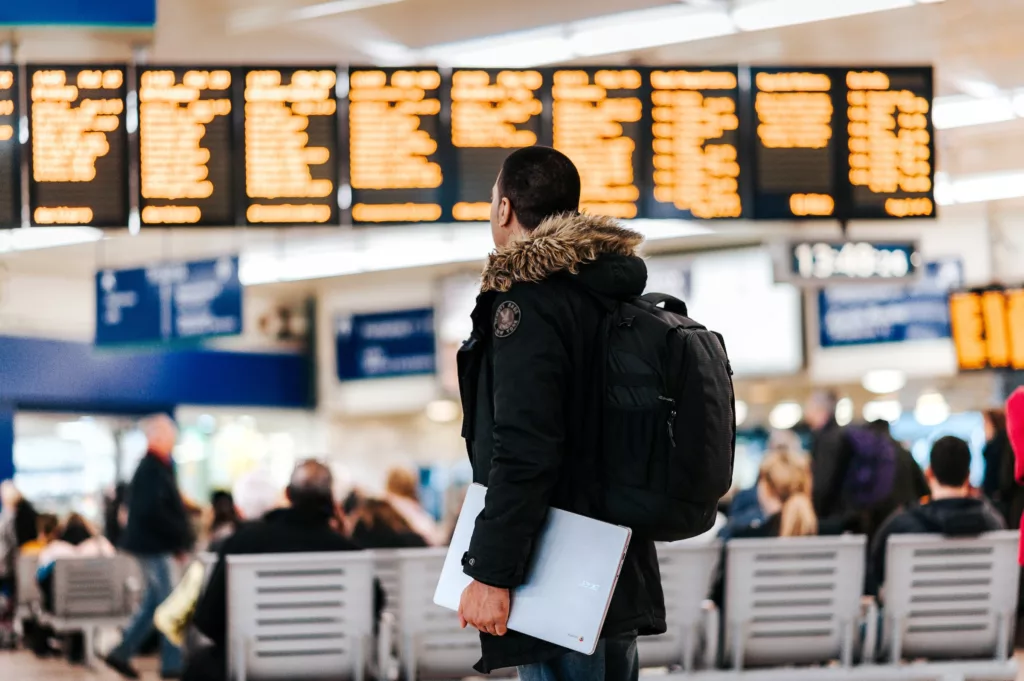
3. Wayfinding Case Study: Rome Airport
When it comes to enhancing the post-booking experience, practical examples offer the best insights. Rome Airport’s partnership with Airsiders is a prime illustration of how digital wayfinding solutions can be transformative.
Transforming Passenger Navigation
Transforming passenger navigation is not only a matter of convenience but also a strategic imperative for modern airports. It directly impacts the efficiency of airport operations and the quality of the passenger experience.
Airsider’s Rome Airport wayfinding case study is a testament to this (and featured in our eBook – which you can download here), where the implementation of Airsiders’ technology resulted in a more intuitive and stress-free journey for travelers.
The integration of Airsiders’ wayfinding technology at Rome Airport highlights the pivotal role of digital navigation solutions in revolutionizing the airport experience. Airsiders’ initiative is emblematic of the industry’s drive towards digitalization, providing a seamless, stress-free navigation that enhances passenger satisfaction and streamlines airport throughput. This strategic move aligns with the aviation industry’s broader vision of a digitally-coordinated environment, where every aspect of the passenger journey is interconnected, leading to more efficient and enjoyable travel experiences.
Operational Benefits
- Increased Efficiency: The streamlined flow of passengers through the airport not only improved the customer experience but also enhanced operational efficiency, reducing congestion and optimizing the use of airport facilities.
- Data Insights: Real-time data on passenger flow allowed for better resource management, from staffing to security, aligning airport operations with actual demand.
The case of Rome Airport demonstrates that strategic partnerships focused on digital solutions not only can solve immediate passenger challenges but also bring long-term operational and commercial benefits.

4. Industry Collaboration to Address Post-Booking Challenges
Cloud services are increasingly central to airport operations, offering scalability for managing passenger volumes and enabling new services. This technological shift is essential for collaborative efforts between airlines and airports to streamline operations and enhance the passenger experience.
Real life examples are becoming more transparent. Airlines are constantly looking to try new ideas to unlock better passenger satisfaction metrics. For example, Qatar Airways and Bangalore International Airport are pioneering the use of the metaverse to offer virtual experiences of airport facilities and onboard environments, setting a new benchmark for immersive customer engagement
The key to unlocking the full potential of the post-booking phase lies in collaboration. By sharing goals and data, airports and airlines can craft a unified experience for passengers.
Data Sharing and Proactive Engagement
- Unified Passenger Profiles: A combined effort to create comprehensive passenger profiles allows for a more personalized journey, with each interaction informed by a deep understanding of individual preferences and history.
- Proactive Information Sharing: By proactively disseminating vital information such as flight delays or gate changes, passengers can adjust their plans accordingly, leading to a more controlled and stress-free experience.
Integrated Ancillary Services
- Unified Digital Platforms: A joint digital platform can offer services ranging from in-flight amenities to airport transfers, creating a seamless experience and driving additional revenue streams.
- Cross-Promotion of Services: Airlines can promote airport services, such as lounge access or fast-track security, to their passengers, while airports can direct travelers to airline-specific offers.
The collaboration between airports and airlines extends beyond mere data exchange; it’s about creating a symbiotic ecosystem that thrives on shared success.

5. Airport Innovators and Leading Carriers
To remain competitive, airports and airlines are increasingly adopting innovative approaches to digital engagement.
One airline that has embraced hyper personalisation of the passenger experience is Delta Air Lines. Their Delta Sync program exemplifies end-to-end personalization, offering SkyMiles members personalized inflight entertainment, dining options, and brand partnerships for a more rewarding travel experience.
Leading by Example
- Innovative Airport Apps: Some airports have developed cutting-edge apps that provide everything from indoor navigation to retail offers, setting a new standard in passenger engagement.
- Top Airline Apps: The most successful airline apps offer streamlined booking, check-in, and real-time notifications, becoming an indispensable travel companion.
Digital Pioneers in the Aviation Industry
- Personalization at Scale: Airports and airlines that personalize the travel experience see increased passenger satisfaction and spend per traveler.
- Integrated Customer Journey: By viewing the passenger journey holistically, from home to final destination, industry leaders can identify new opportunities for engagement and service provision.
The aviation industry’s digital pioneers are charting a course for the future, where the passenger experience is enhanced at every stage, and collaboration is the engine driving innovation.

The aviation industry is a dynamic, ever-evolving sphere, constantly adapting to meet the demands of an increasingly global and interconnected world. As we move towards 2024, the industry is gearing up for significant transformations that will redefine how we travel, conduct business, and connect with one another. These shifts are powered by advancements in technology, changing geopolitical landscapes, and a renewed emphasis on sustainability.
In this article, we’ll take a deep dive into the ten biggest trends set to reshape the aviation industry in 2024. We’ll explore the rise of sustainable aviation fuels, the impact of geopolitical disruptions, the shift from air to rail, the potential global recession, and the role of artificial intelligence. We’ll also delve into advanced air traffic management, the burgeoning Asian market, personalized passenger experiences, health and safety measures in the post-Covid era, and the exciting prospects of drone delivery and urban air mobility.
As we navigate these trends, our focus will be on how the industry can transform challenges into opportunities. We’ll highlight the strategies that airlines and airports can adopt to stay ahead of the curve, delivering superior services to their customers while also driving growth and sustainability.
This comprehensive analysis will offer valuable insights for anyone associated with the aviation industry and those keen on understanding its future trajectory.
1. Sustainable Airline Fuels (SAF) and Bio-Fuels
SAFs have the potential to significantly reduce the carbon footprint of aviation. They are produced from sustainable resources such as waste oils and agricultural residues, offering a viable and environmentally friendly alternative to conventional jet fuels.
Airlines and airports must work together to develop the necessary infrastructure and logistics to accommodate this transition, ensuring that the switch to SAFs is both sustainable and economically viable.
The move to SAFs will also require regulatory support and incentives. Governments and aviation authorities can play a key role in facilitating this transition by providing policy frameworks and financial incentives that encourage the use of these fuels. For airlines, the switch to SAFs can offer significant benefits such as improved public image, potential cost savings in the long term, and alignment with global environmental goals.
Moreover, the use of SAFs can help airlines attract eco-conscious customers, who are increasingly considering the environmental impact of their travel choices. By offering greener travel options, airlines can differentiate themselves in a competitive market and enhance their customer appeal.
The Push Towards SAFs: Key issues
- Transition to SAFs to reduce CO2 emissions
- Development of infrastructure and logistics to support SAF usage
- Regulatory support for SAF adoption
Challenges and Possible Solutions
- High cost and limited availability of SAFs: Investment in SAF production and supply chain could reduce costs and increase availability.
- Regulatory barriers: Collaboration between airlines, governments, and regulatory bodies to develop supportive policies.

2. Geopolitical Disruption
In an increasingly interconnected world, geopolitical disruptions can have far-reaching effects on the aviation industry. From conflicts to economic sanctions, these disruptions can lead to sudden changes in oil prices, affecting the cost of jet fuel and ultimately the pricing of fares. Airlines need to develop robust strategies to manage these risks, including hedging fuel costs and dynamically adjusting routes and schedules based on evolving geopolitical situations.
Virtual interlining offers a promising solution to these challenges. By enabling airlines to provide seamless travel across multiple carriers, virtual interlining can help airlines adapt to sudden changes in routes due to geopolitical disruptions. This flexibility not only ensures service continuity but also enhances customer satisfaction by minimizing disruptions to their travel plans.
Moreover, airlines can leverage advanced data analytics and AI to predict and respond to geopolitical disruptions. By analyzing historical data and current geopolitical trends, these technologies can help airlines forecast potential disruptions and develop proactive strategies to mitigate their impact.
Navigating Geopolitical Challenges: Key Issues
- Development of strategies to manage risks associated with geopolitical disruptions
- Adoption of virtual interlining to maintain service continuity
Challenges and Possible Solutions
- Sudden changes in oil prices and flight routes: Leveraging data analytics and AI for predictive modeling and proactive decision-making.

3. The Shift from Air to Rail in the EU
The trend towards rail travel in Europe is driven by both environmental concerns and government policy. Rail travel generates significantly less CO2 emissions than air travel, making it a more sustainable option for short to medium distance travel. In response, many European governments (with France leading the charge on this issue) are encouraging this shift by investing in high-speed rail networks and implementing policies that discourage short-haul flights.
While this trend presents a challenge for airlines, it also offers opportunities. Airlines can partner with rail companies to offer seamless multi-modal travel experiences, combining the speed of air travel for long distances with the environmental benefits of rail travel for shorter segments. This can enhance customer convenience while also reducing the environmental impact of travel.
In addition, airlines can leverage their expertise in logistics and customer service to diversify into the rail sector. By offering high-quality rail services, airlines can not only retain their customer base but also attract new customers who prefer more sustainable travel options.
Embracing Multi-modal Travel: Key Issues
- Partnering with rail companies to offer seamless multi-modal travel experiences
- Leveraging airline expertise to diversify into rail sector
Challenges and Possible Solutions:
- Reduced demand for short-haul flights: Development of hybrid models combining air and rail travel for optimal efficiency and sustainability.

4. Economic Headwinds
The potential for a global recession presents significant challenges for the aviation industry. Reduced consumer spending can lead to a decrease in passenger movements, impacting airline revenues. In response, airlines need to develop flexible business models that can adapt to changing economic conditions. This includes offering more affordable travel options, optimizing routes based on demand, and finding ways to reduce operational costs.
In uncertain economic times, customer loyalty becomes even more important. Airlines need to focus on enhancing the customer experience, from booking to arrival, to ensure customer retention. This includes offering flexible booking options, providing exceptional customer service, and leveraging technology to streamline the travel process.
Moreover, airlines can explore new revenue streams to mitigate the impact of reduced passenger movements. This includes ancillary services such as in-flight entertainment and connectivity, premium seating options, and personalized services. By diversifying their revenue streams, airlines can better weather economic downturns and ensure long-term sustainability.
Adapting to Economic Uncertainties: Key Issues
- Development of flexible business models to adapt to changing economic conditions
- Focus on enhancing customer experience to ensure customer retention
Challenges and Possible Solutions
- Decrease in passenger movements and airline revenues: Diversification of revenue streams through ancillary services and partnerships.

5. Artificial Intelligence (AI) and Automation
AI and automation are transforming the aviation industry, offering numerous benefits including operational efficiency, cost savings, and improved customer experience. In aircraft maintenance, predictive analytics can help identify potential issues before they become major problems, reducing downtime and maintenance costs. In baggage handling, automation can speed up processing times and reduce the risk of lost or delayed baggage.
In customer service, AI can provide personalized experiences based on customer preferences and behaviors. This could include personalized marketing offers, tailored in-flight services, and dynamic pricing. By providing a more personalized service, airlines can enhance customer satisfaction and loyalty, driving increased revenues.
Moreover, AI can help airlines optimize their operations and decision-making. From dynamic route planning to demand forecasting, AI can provide valuable insights that enable airlines to operate more efficiently and effectively. As the technology continues to evolve, the possibilities for AI in aviation are virtually limitless.
Leveraging AI for Operational Efficiency: Key Issues:
- Use of predictive analytics for aircraft maintenance
- Automation of baggage handling processes
Challenges and Possible Solutions
- High upfront investment in AI technology: Exploration of partnership models or phased implementation to manage costs.
- Privacy concerns: Adoption of robust data governance practices to ensure privacy compliance and build customer trust.

6. Advanced Air Traffic Management
Advancements in air traffic management technologies are set to transform airspace systems, increasing efficiency, reducing delays, and enhancing safety. AI-powered aircraft routing can optimize flight paths, reducing fuel consumption and minimizing flight times. Dynamic airspace configurations, enabled by real-time data analysis, can adapt to changing traffic conditions, ensuring efficient use of airspace. And enhanced ground operations, leveraging automation and data analytics, can streamline airport processes, reducing turnaround times and improving passenger experience.
For airlines, these advancements can improve operational efficiency, reduce costs, and enhance service reliability. By reducing delays, airlines can ensure more on-time arrivals, enhancing customer satisfaction and loyalty. Furthermore, efficient air traffic management can enable more flights without requiring additional infrastructure, supporting growth without significant capital investment.
For airports, advanced air traffic management can enhance capacity and throughput, enabling them to handle more flights without compromising safety or efficiency. This can attract more airlines to the airport, driving revenue growth.
Moreover, by reducing ground delays, airports can improve the passenger experience, enhancing their reputation and competitiveness.
Transforming Airspace Systems: Key Issues
- AI-powered aircraft routing for optimal flight paths
- Dynamic airspace configurations for efficient use of airspace
Challenges and Possible Solutions
- High cost and complexity of implementing advanced technologies: Phased implementation and leveraging of partnerships to share costs and expertise.
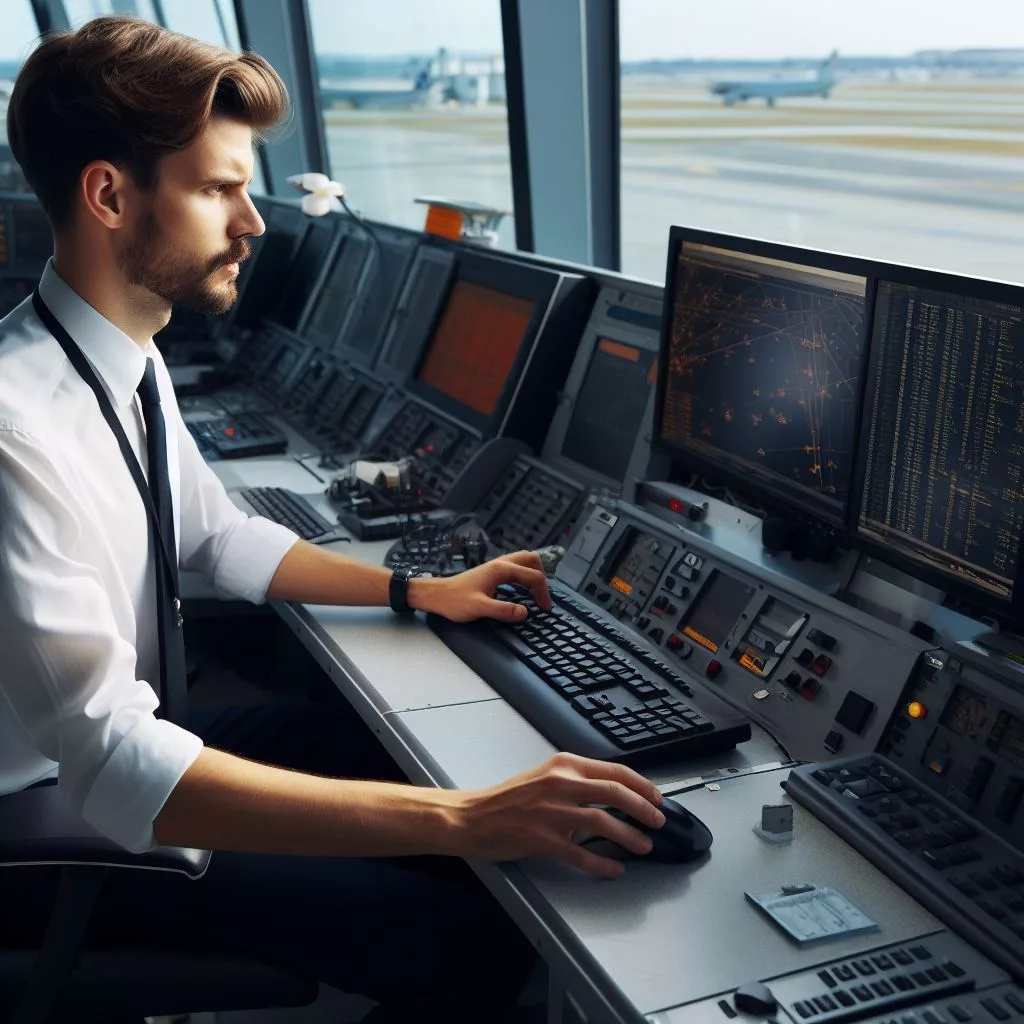
7. Rise of the Asian Market
Asia’s growing middle class, with its increasing disposable income and appetite for travel, presents a significant opportunity for airlines and airports. Countries like China and India are seeing a surge in air travel demand, driven by economic growth and urbanization. To tap into this growing market, airlines need to understand the unique needs and preferences of Asian travelers and tailor their offerings accordingly.
However, the Asian market also presents challenges, including intense competition, regulatory hurdles, and infrastructure constraints. Success in this market requires a deep understanding of local cultures, business practices, and regulatory environments. Airlines need to build strong local partnerships and invest in market research to navigate these challenges and seize the opportunities.
Moreover, the rise of the Asian market is reshaping global aviation networks. Traditional hub airports in Europe and North America are facing competition from emerging hubs in Asia. To stay competitive, these traditional hubs need to adapt their strategies, focusing on service excellence, connectivity, and efficiency.
Tapping into the Asian Market: Key Issues
- Understanding the unique needs and preferences of Asian travelers
- Building local partnerships to navigate market challenges
Challenges and Possible Solutions
- Intense competition and regulatory hurdles: Deep market research and local partnerships to understand and navigate the market effectively.
- Virtual interlining technologies can enable smaller, regional airports to become more agile and offer additional connections and travel locations for passengers in expanding regions.
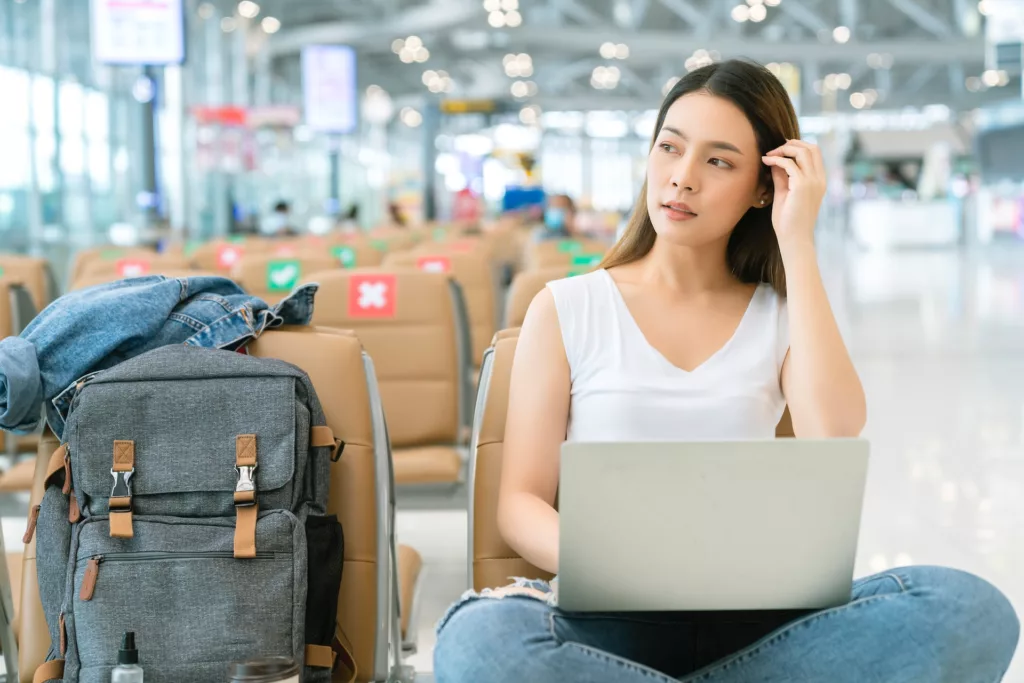
8. Personalized Passenger Experience
Personalization is becoming a key differentiator in the aviation industry. Thanks to advances in data analytics and AI, airlines can now understand their customers better than ever before. They can use this insight to provide personalized services and offers, enhancing customer satisfaction and loyalty.
For instance, airlines can tailor their marketing messages based on individual customer preferences and behaviors, increasing the effectiveness of their marketing efforts. They can also personalize inflight services, such as meal choices, entertainment options, and seating preferences, enhancing the travel experience.
However, personalization also raises privacy concerns. Airlines need to ensure that they handle customer data responsibly and transparently, complying with data protection regulations and respecting customer privacy. By doing so, they can build trust with their customers, which is crucial to the success of their personalization efforts.
Enhancing Customer Experience through Personalization: Key Issues
- Tailoring marketing messages and services based on customer preferences
- Leveraging data analytics to enhance personalization
Challenges and Possible Solutions
- Privacy concerns: Ensuring responsible and transparent handling of customer data to build trust and comply with regulations.

9. Health and Safety Measures Post-Covid
The Covid-19 pandemic has brought health and safety to the forefront of the aviation industry. Enhanced cleaning protocols, social distancing measures, and contactless technologies have become the norm, and are likely to remain so in the foreseeable future.
These measures not only protect passengers and staff, but also help to rebuild customer confidence in air travel. Airlines that prioritize health and safety can differentiate themselves from competitors and attract health-conscious travelers.
However, implementing these measures can also pose challenges, including increased operational complexity and costs. Airlines need to find ways to efficiently implement these measures without compromising operational efficiency or customer experience. This could involve leveraging technology, such as AI and automation, to streamline health and safety procedures.
Prioritizing Health and Safety: Key Issues
- Implementing enhanced cleaning protocols, social distancing measures, and contactless technologies
- Rebuilding customer confidence in air travel
Challenges and Possible Solutions
- Increased operational complexity and costs: Leveraging technology to streamline health and safety procedures and manage costs.
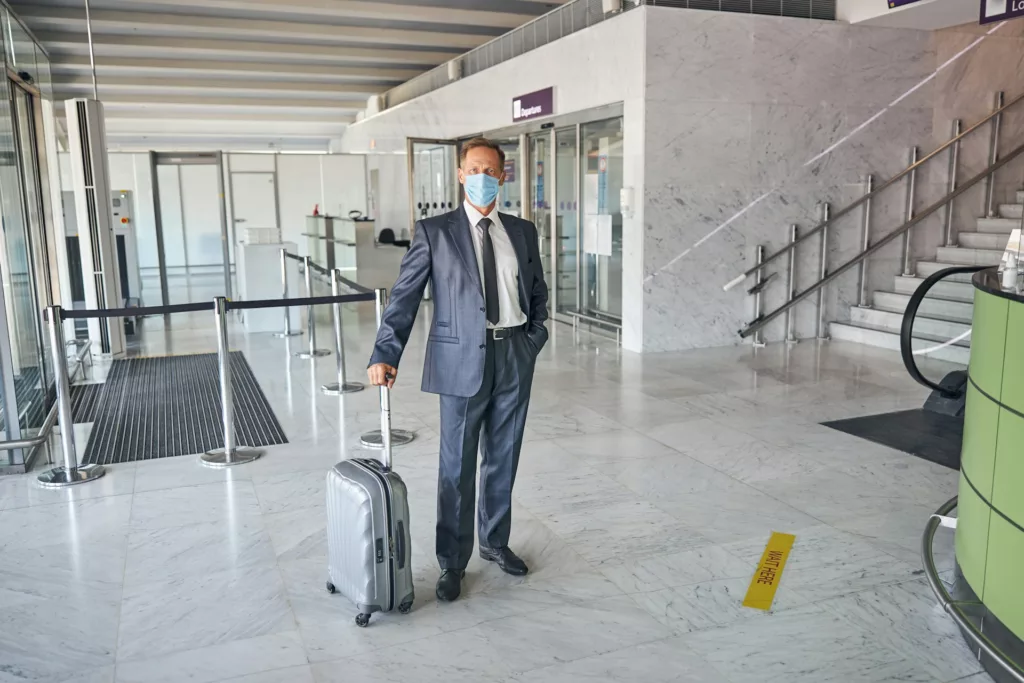
10. Drone Delivery and Urban Air Mobility
Drone delivery and urban air mobility are set to transform the aviation industry. Drones offer a fast and cost-effective way to deliver goods, particularly in urban areas with heavy traffic. For airlines and airports, this presents an opportunity to diversify their services and create new revenue streams.
Urban air mobility, which involves the use of small aircraft for short-distance travel in urban areas, could also become a reality in the near future. This could transform the way people travel, offering a fast and convenient alternative to traditional ground transportation.
However, these trends also present challenges, including regulatory hurdles, safety concerns, and public acceptance. Airlines and airports need to work with regulators, technology providers, and the public to address these challenges and make drone delivery and urban air mobility a reality.
Transforming Aviation with Drones and Urban Air Mobility
- Exploring drone delivery as a new service offering
- Preparing for the emergence of urban air mobility
Challenges and Possible Solutions
- Regulatory hurdles and safety concerns: Collaborating with regulators, technology providers, and the public to address safety and regulatory challenges.
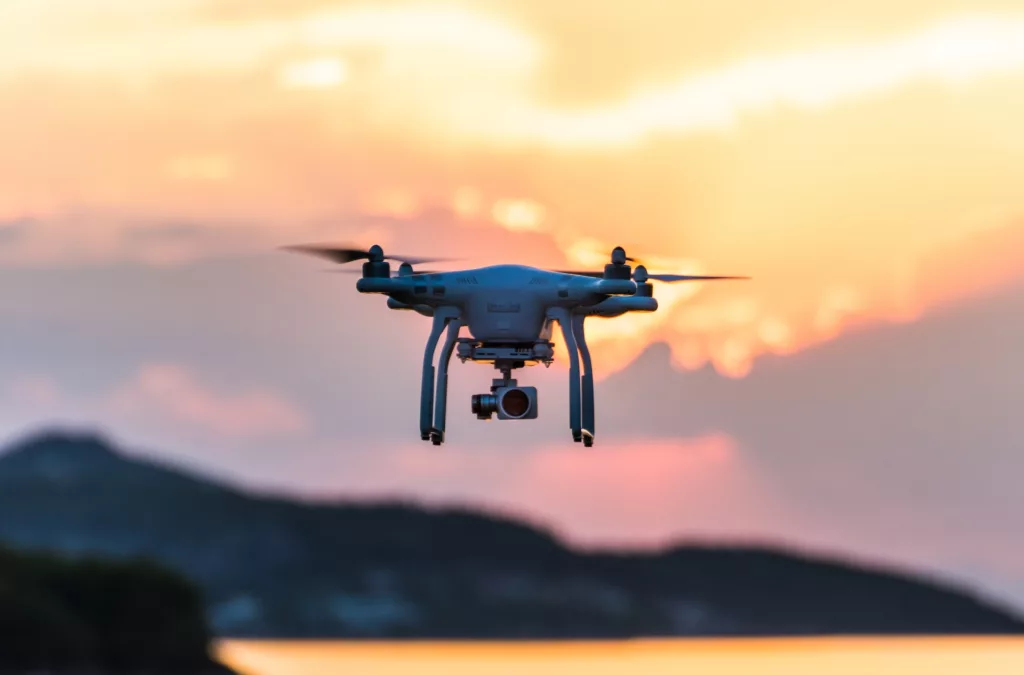
Airsiders’ modern booking platform Volario enables the airline to offer hundreds of seamless flight connections
Thanks to the cooperation with Airsiders, Lübeck Air passengers will soon be able to seamlessly book a connecting flight from Lübeck outbound to any destination directly on their website. The flights are merged based on Airsiders’ unique Virtual Interlining (VI) algorithm, which enables Lübeck Air to offer pre-combined itineraries bookable in a single transaction, plus connection protection to cover potential issues during travel.
Lübeck Air is a German boutique regional airline based in the beautiful Hanseatic city of Lübeck. It offers ten destinations throughout Europe – from metropolitan regions like Munich to picturesque places like Bergen, Menorca and Keflavik. The fleet consists of two aircraft based at Lübeck Airport. Lübeck Air is one of the last full-service airlines in Europe to include hand and checked baggage in every fare. A snack from the in-house kitchen and a smile from the crew are also part of every flight experience.
The airline’s year-round focus is on business travellers as well as exclusive holiday seekers coming from Lübeck and the catchment area such as Kiel, Lüneburg, Northeast Hamburg, Schwerin and Rostock. Based on Lübeck Air’s business model of being an independent regional airline, up to now passengers looking to travel internationally only had the option of purchasing two separate tickets – one with Lübeck Air and another with another carrier for the onward flight.
“The cooperation with Airsiders helps us to connect Lübeck with the world. We can offer numerous new destinations together with different airlines and still retain our independence. In addition to the availability of new destinations, we are working together with Airsiders to ensure that passengers’ luggage can be checked through. This will offer significant added value for travellers.” – emphasises Axel Reissmann, Chief Executive Officer of Lübeck Air.
“We are proud to work together with Lübeck Air on this project. Together we can offer passengers new attractive flights and bring remote destinations “closer” to Europe. We view this as the first step in a long-term collaboration and look forward to innovating our industry together.” – outlines Yavuz Karadag, CEO and Co-Founder of Airsiders.
About Lübeck Air
Lübeck Air is an airline that has been offering flights from its home airport of Lübeck since 2020. Starting with just two destinations, it now serves up to ten seasonal as well as year-round destinations. The focus is on business routes and niche markets. With 66,000 passengers in 2022, Lübeck Air is Germany’s largest regional airline.